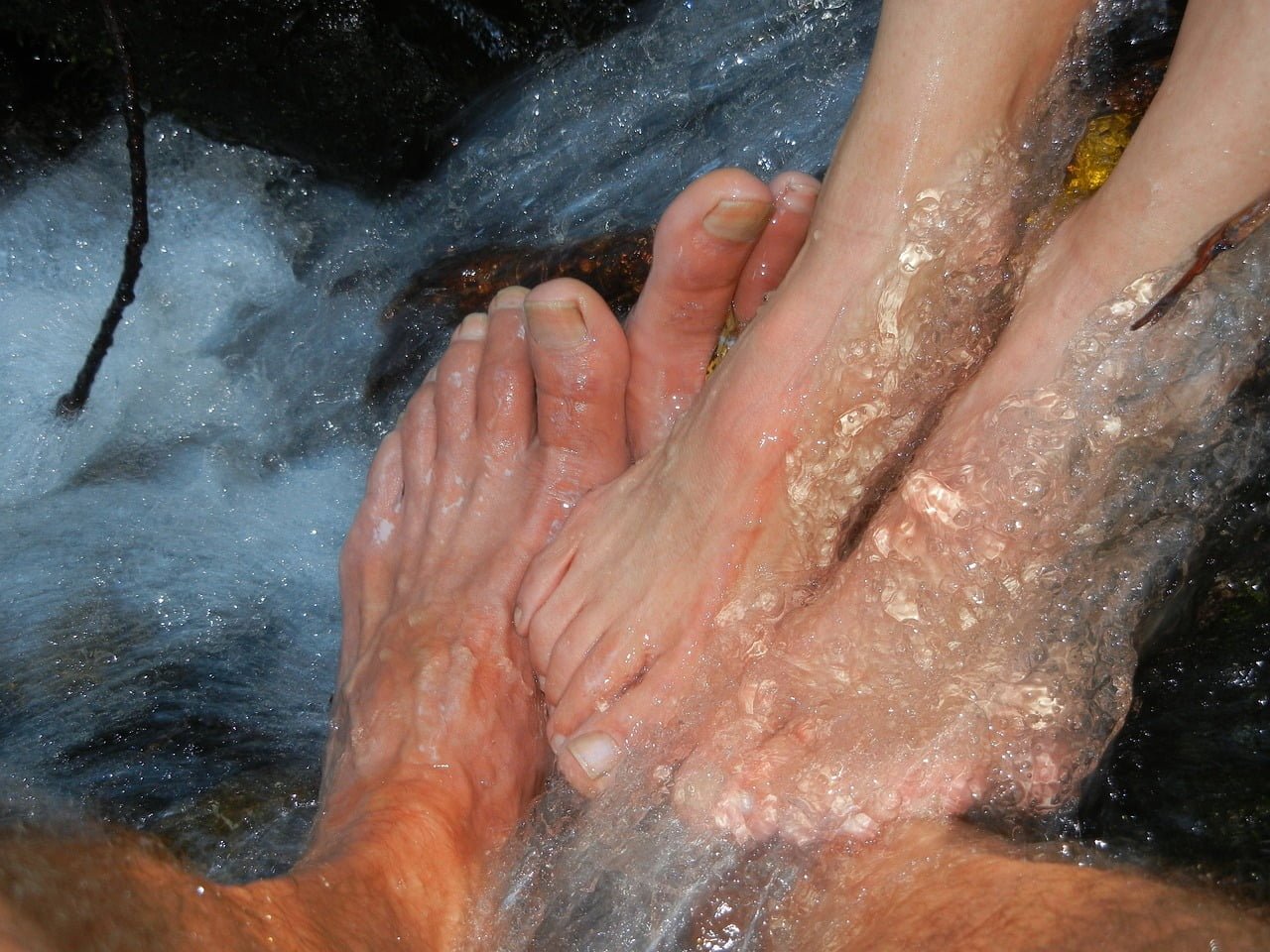Nail Fungus: Condition and How Infections Occur
Nail fungus, also known as onychomycosis, is a common fungal infection that affects the nails, primarily the toenails. It’s essential to comprehend this condition and how you can become infected to take proactive steps to prevent it. Toenail fungus can be a persistent and bothersome condition. Fortunately, several effective treatments are available to help you regain healthy nails.
The Nail Fungus Condition
Nail fungus occurs when various fungi invade the nails, typically dermatophytes, yeasts, or molds. It can change the nail’s color, texture, and shape. Common symptoms include yellowing, thickening, brittleness, and sometimes a foul odor. The condition can be uncomfortable, even painful, and affect self-confidence.
How Infections Occur
- Warm, Moist Environments: Fungi thrive in warm, moist environments. Walking barefoot in communal areas like locker rooms, public pools, or showers can expose your feet to fungal spores.
- Footwear: Tight-fitting, non-breathable shoes can create an environment conducive to fungal growth.
- Nail Trauma: Injuries to the nail or surrounding skin can create entry points for fungi.
- Aging: As we age, the risk of nail fungus increases due to slower nail growth and reduced blood circulation.
- Weakened Immune System: Conditions that weaken the immune system, such as diabetes or HIV, can make you more susceptible to fungal infections.
- Shared Items: Sharing nail clippers, files, or socks with an infected person can transmit the fungus.
Preventing nail fungus involves maintaining good foot hygiene, wearing breathable shoes, avoiding shared personal items, and promptly treating any nail injuries. If you suspect an infection, consult a healthcare provider for proper diagnosis and treatment. Early intervention is crucial in managing nail fungus effectively.

Navigating the Different Stages of Toenail Fungus
Toenail fungus is a common condition that progresses through several stages, each with its characteristics and challenges. Understanding these stages can help you identify and address the infection more effectively:
1. Initial Infection:
- It begins with the initial infection, often unnoticed. Fungi invade the nail bed, causing no visible changes, but symptoms like itching or mild discomfort may occur.
2. Thickening and Discoloration:
- As the infection advances, the toenail becomes thicker, and discoloration sets in. Nails may turn yellow, brown, or white, making the texture rough or brittle.
3. Distortion of Nail Shape:
- The fungal infection can lead to changes in nail shape, causing it to become curved or distorted. This is a more pronounced sign of toenail fungus.
4. Separation from Nail Bed:
- In severe cases, the toenail may separate wholly or partially from the nail bed. This can be painful and may expose the sensitive tissue underneath.
5. Spreading to Other Toes:
- If left untreated, toenail fungus can spread to neighboring toes or even other parts of the body. It’s crucial to address the infection promptly to prevent further complications.
6. Toenail Loss:
- In the most advanced cases, the infected toenail may be lost entirely.
Early intervention is crucial in managing toenail fungus effectively. Whether you choose topical treatments, oral medications, laser therapy, or a combination of methods, consult a healthcare provider to determine the best course of action based on the stage of your infection. Please don’t wait to address toenail fungus; understanding its stages can help you take action and regain healthy, beautiful toenails.
Take Action: Preventing the Spread of Toenail Fungus
When dealing with toenail fungus, one of your top priorities is preventing its spread to other nails or people. Here are proactive steps to stop toenail fungus from spreading:
1. Prompt Treatment: Treat the infected toenails as soon as possible. The longer you wait, the more likely the fungus is to spread.
2. Maintain Good Foot Hygiene: Keep your feet clean and dry. Regularly wash and dry your feet, especially between the toes, where moisture can accumulate.
3. Avoid Nail Salons: Until the infection is fully treated, avoid nail salons to prevent cross-contamination.
4. Wear Breathable Shoes: Choose shoes made of breathable materials like leather, and consider moisture-wicking socks. These help keep your feet dry and discourage fungal growth.
5. Disinfect Footwear: Use antifungal sprays or powders to disinfect your shoes regularly.
6. Avoid Sharing Personal Items: Don’t share nail clippers, towels, or socks with others, as this can transmit the fungus.
7. Trim Nails Carefully: Keep your toenails trimmed, but avoid cutting too close to the skin, which can create openings for the fungus to enter.
8. Choose Proper Footwear: When in public places like pools or gyms, wear flip-flops or sandals to reduce the risk of exposure.
9. Follow Treatment Guidelines: If you’re undergoing treatment, follow your healthcare provider’s instructions diligently to ensure complete fungus eradication.
Remember that toenail fungus can be persistent, so patience is essential. If you suspect an infection, seek professional advice promptly to prevent further spread. You can stop toenail fungus and protect your healthy nails by taking these active measures.
The Lingering Consequences of Neglected Toenail Fungus
Untreated toenail fungus is more than just an aesthetic concern; it can have lasting consequences that affect your overall foot health and well-being. Here are the active ways untreated toenail fungus can impact you in the long term:
1. Pain and Discomfort: As the fungal infection progresses, it can cause pain and discomfort, making walking and wearing shoes painful experiences.
2. Nail Deformation: Neglected toenail fungus often leads to nail deformation. Nails may become thick, brittle, and misshapen, affecting their function and appearance.
3. Risk of Secondary Infections: The damaged nail provides an entry point for bacteria and other pathogens, increasing the risk of secondary infections that can be more challenging to treat.
4. Spreading to Other Nails: Toenail fungus can quickly spread to neighboring toenails or fingernails if left untreated, compounding the problem.
5. Emotional Impact: Toenail fungus can erode self-esteem and confidence due to the embarrassment it may cause. This can lead to social and psychological distress.
6. Limitation of Physical Activities: Pain and discomfort from toenail fungus can restrict physical activities, impacting the overall quality of life.
7. Compromised Foot Health: In severe cases, untreated toenail fungus can contribute to foot complications, especially in individuals with diabetes or compromised immune systems.
Preventing these long-term consequences starts with early intervention. Consult a healthcare provider or podiatrist if you suspect toenail fungus. They can recommend appropriate treatments and help you avoid the negative repercussions of neglected toenail fungus. Please remember that addressing the issue quickly is crucial for maintaining healthy and comfortable feet.
Signs Your Toenail Fungus Is on the Retreat
When dealing with toenail fungus, it’s natural to eagerly look for signs that your treatment is working and the fungus is on its way out. Here are some active ways to know if your toenail fungus is in retreat:
- Observe the new nail growth at the base of your toenail. If it appears more transparent and healthier than the infected part, it’s a positive sign that the fungus is receding.
2. Less Discoloration:
- As the fungus weakens, you may notice a reduction in your nail’s yellow or brown discoloration. It’s a sign that the infection is losing its grip.
3. Improved Nail Texture:
- Over time, the texture of your affected nail may become smoother. This indicates that the new, healthy nail is replacing the damaged one.
4. Reduced Thickness:
- Fungal nails tend to thicken. If you notice a decrease in thickness as your treatment progresses, it’s a promising sign.
5. Fewer Symptoms:
- As the fungus recedes, you may experience fewer symptoms like itching, pain, or foul odor associated with the infection.
6. Consistency in Treatment:
- Staying committed to your chosen treatment regimen is crucial. You’re more likely to see positive results if you follow your healthcare provider’s recommendations consistently.
Remember, toenail fungus treatment takes time, and improvement can be gradual. It’s essential to be patient and continue your treatment as directed. If you have doubts about your progress, consult your healthcare provider for guidance and reassurance. Keep a close eye on these signs of improvement; you’ll be on your way to healthier toenails in no time.







